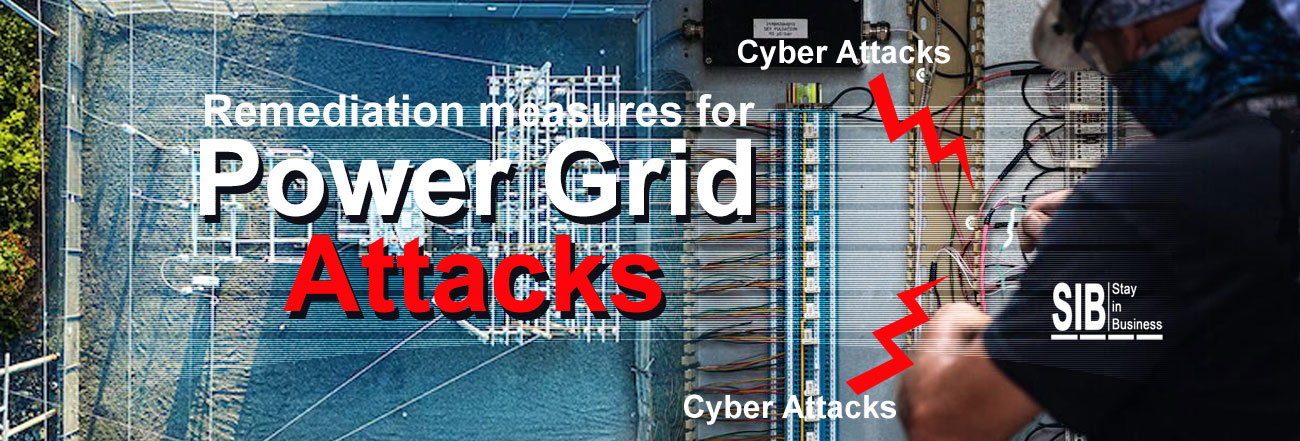Remediation Measures for Power Grid Attacks

How Power Grid Attacks are on the Rise and What Utilities Can Do About it
The U.S. power grid is undergoing a surge in attacks as vandals, extremists, and cybercriminals target the nation’s critical infrastructure. Recent reports reveal that there have been 101 cyber and physical attacks on equipment that delivers electricity to the nation during the initial eight months of 2022. The impact of such attacks can be severe, comprising power outages, infrastructure damage, and potential loss of life. Utilities, federal agencies, and state regulators have taken steps to strengthen the security posture of the grid over the past two decades. However, the number of crucial grid components vulnerable to attack is becoming more vulnerable with time.
What is the Reason Behind Power Grid Attacks?
- There is increasing dependency on digital technology in power grid infrastructure. There are several systems connected to the internet, and this serves as a perfect entry point to the hacker.
- There is the rise of state-sponsored attacks and the increase of advanced hacking tools that make it simple for hackers to perform complex attacks.
- As power grids become old, they may become more susceptible to equipment failures, system discrepancies, etc. Besides, legacy systems may not consist of the same level of monitoring and identification capabilities as newer systems. Aging infrastructure may yield to damage from extreme weather scenarios, natural scenarios, or deliberate attacks.
- The nation is expanding the power grid and more people are purchasing electric vehicles.
- Wind and solar power plants are mostly located in remote locations where there may be fewer measures for grid security, and this acts as a major gateway for attacks.
Remediation measures for power grid attacks
A power grid attack can cause substantial disruption and damage. It can lead to economic impact including lost productivity and infrastructure damage. It can be detrimental to public safety by disrupting emergency services. Most importantly, it can have a negative impact on public trust with regard to the reliability and security of the power grid. Let’s see some remediation measures for power grid attacks.
- For crucial new transmission line construction, building new substations instead of enlarging existing substations that affect reliability if those substations totally shut down.
- There should be the integration of protection systems with other controls and operating systems to make sure that operators possess total functional awareness when there is a threat of attack.
- By simulating power disruptions or surges, utilities can determine the ability of their systems to handle such incidents and recognize any event that needs to be addressed.
- Critical consumers should be recognized, and particular attention must be paid to ensure service continuity and maintenance of essential functions, for example, in case of a terrorist attack. This can be achieved by offering several power feeds to distribution customers and by offering onsite generation in the event of loss of bulk transmission.
- When failing equipment can be identified and repaired before a huge failure, the number and duration of outages can be decreased. Computer-based intelligent electronic devices can be deployed to monitor and secure distribution feeders.
- Enhance situational awareness by utilizing advanced sensors and monitoring systems. By this, an electric utility can monitor as well as remotely control distribution. Systems for automated distribution and control can be deployed.
- Advanced communication systems can be installed in distributing systems, comprising radio and cell communications, to obtain data and to manage remote devices.
- Deploy UPS systems, backup generators, and redundant elements. Redundant transmission lines comprise having multiple lines that transmit power between stations. This ensures that power can still be provided if one or more of the lines are damaged. Redundant cybersecurity measures comprise having multiple layers of security in place, and this includes firewalls, intrusion detection systems, etc.
- Improve physical security measures including perimeter fencing, video surveillance, access control systems, etc.
- Maintain a well-defined response and recovery plan to lessen the damage caused due to an attack. This includes forming business continuity plans, disaster recovery plans, and incident response plans.
These measures can assist enhance the resiliency and security posture of the power grid, decrease the risk of potential attacks, and encourage rapid response and recovery during an attack. When the deployment of these remediation measures is prioritized, utilities can be sure that the power grid remains dependable and safe in the face of potential threats.
Categories: Compliance, cybersecurity, Safety
